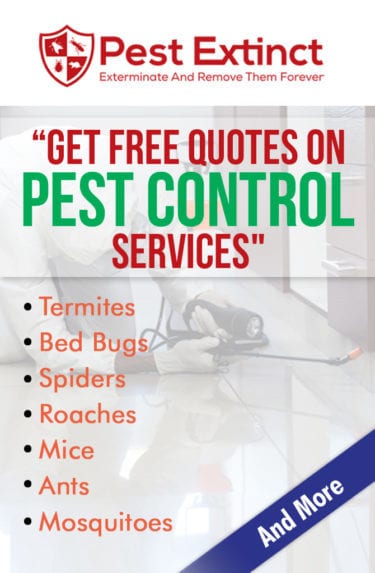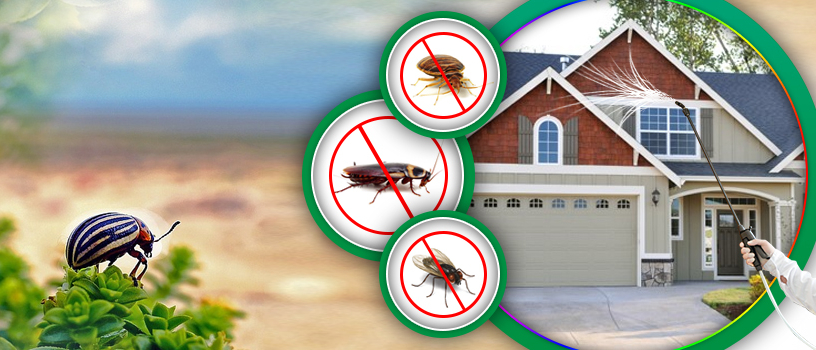Sorts Of Pest Control: Which Technique Is Right for Your Problem?
When confronted with a pest invasion, the choice of a proper technique for parasite control is essential in properly handling the circumstance. From chemical therapies to biological remedies, there exists a variety of strategies that can be utilized to attend to different sorts of parasites. Each method comes with its very own collection of advantages and factors to consider, making the decision-making procedure a nuanced one. Comprehending the subtleties of each technique and reviewing their compatibility with the details pest problem available is essential for achieving lasting success in bug monitoring. By exploring the numerous sorts of parasite control approaches offered, people can make enlightened decisions tailored to their distinct scenarios, making sure a much more sustainable and reliable outcome in parasite elimination.

Chemical Insect Control
Chemical pest control entails the usage of artificial or normally acquired chemicals to take care of and get rid of pest populaces effectively. This technique is frequently utilized in farming, forestry, and residential setups to fight a variety of parasites, including weeds, insects, and rats. The use of chemical pesticides can supply quick and targeted options to pest invasions, making it a popular choice for many people and businesses.
One of the vital advantages of chemical bug control is its capability to swiftly remove bugs, lowering the threat of damage to plants, building, and human health and wellness - pest control visalia. By utilizing details chemicals that target certain bugs, this method can properly manage infestations while reducing harm to advantageous microorganisms and the atmosphere when used properly
However, using chemical bug control also elevates issues about prospective damaging impacts on non-target varieties, water sources, and human wellness. It is vital to follow security standards, apply chemicals sensibly, and consider alternative bug control methods to reduce these threats and make sure lasting pest administration practices.
Biological Parasite Control
Biological insect control, additionally recognized as biocontrol, makes use of living microorganisms to handle and lower insect populaces naturally. By utilizing the insect's natural predators or pathogens, organic bug control supplies a ecologically friendly and lasting option to pest management.
One common example of organic bug control is using ladybugs to manage aphid populations in gardens. Ladybugs are natural predators of aphids and can aid maintain their numbers in check without using damaging chemicals. The bacterium Bacillus thuringiensis (Bt) is used as an organic insecticide to regulate caterpillar bugs while being safe for various other organisms.
Mechanical Insect Control
Making use of physical and hands-on approaches to handle pest populations, mechanical insect control supplies a different technique that does not count on the use of living microorganisms or synthetic chemicals. This technique involves the usage of barriers, catches, or other tools to physically hinder or get rid of bugs. By blocking bug entry factors or setting up traps to capture them, mechanical insect control can efficiently reduce invasions without presenting chemicals right into the setting.
One typical instance of mechanical insect control is making use of mesh screens on doors and windows to stop bugs from getting in buildings. pest control visalia. This straightforward yet reliable method functions as a physical obstacle, maintaining insects out while permitting proper air flow. Additionally, gadgets like mousetraps, fly swatters, and ultrasonic repellents fall under the mechanical bug control category

Physical Pest Control
A reliable technique to managing bug populations without counting on chemical or biological approaches involves using physical parasite control strategies. Physical insect control methods aim to get rid of or deter parasites through mechanical means instead of chemicals or pesticides. These techniques are commonly liked for their eco-friendly nature and marginal influence on non-target microorganisms.
Some usual physical parasite control techniques consist of using barriers such as screens or nets to stop pest access, traps to catch and remove pests, and hand-picking to physically get rid of parasites from plants or structures. In addition, techniques like warm therapies can be made use of to manage insects like bed bugs by raising the temperature level to degrees that are deadly to the pests.
Physical pest control is specifically useful in integrated bug monitoring (IPM) approaches, where numerous insect control approaches are combined for efficient pest administration while decreasing making use of chemicals. By making use of physical pest control methods, people can successfully address insect invasions with marginal ecological impact.
Integrated Pest Management
When carrying out physical parasite control approaches as part of insect administration approaches, Integrated Insect Monitoring (IPM) emerges as an extensive approach that leverages different methods to successfully control pest populaces. IPM focuses on long-term avoidance of bugs through a combination of biological, social, physical, and chemical devices customized to specific pest issues. By integrating numerous control tactics, IPM aims to minimize the dangers related to parasites while additionally lowering dependence on chemical remedies.

Verdict
To conclude, determining one of the most effective approach of bug control for your infestation relies on various aspects such as the type of insect, the extent of the invasion, and ecological factors webpage to consider. Chemical bug control entails using pesticides, organic insect control uses all-natural killers, mechanical insect control entails physical obstacles, physical pest control consists of capturing or removing pests, and incorporated pest management integrates several methods for an alternative best site approach to pest control. Pick the technique that best fits your certain situation.
By utilizing the bug's all-natural killers or virus, organic parasite control offers a ecologically friendly and sustainable solution to pest monitoring.
Utilizing manual and physical techniques to take care of parasite populaces, mechanical pest control uses an alternative approach that does not count on the usage of living microorganisms or artificial chemicals.An efficient technique to managing bug populations without counting on chemical or biological techniques includes the usage of physical parasite control strategies.When implementing physical insect control techniques as part of pest monitoring strategies, Integrated Bug Administration (IPM) arises as an extensive technique that leverages various methods to properly manage pest populations. Chemical pest control entails the usage of pesticides, organic parasite control uses all-natural predators, mechanical insect control involves physical obstacles, physical insect control includes capturing or eliminating insects, and integrated parasite administration integrates go to this website numerous approaches for an all natural method to pest control.